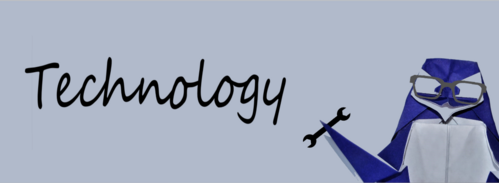
One thing my neighbor is asking me, when I talk about crypto currencies is: “It sounds nice, but where can I buy something with it?”. This is indeed hard – in Germany, people tend to be way more conservative, when it comes to money. Why buying the Currywurst with BTC, when I can do it with Euro? And don’t let me start on mobile payment – my best friend is still refusing to use online banking, fearing that someone might steal his money by hacking. I think we would sit down for days, when I start to talk about crypto currencies.
ARK aims to solve this problem and wants to bring together blockchain projects, to create an ecosystem, which promotes a mass adoption of crypto currencies up to a point, “where consumers do not know that they are using it”. To achieve this, they want to target the everyday consumer into using crypto currencies. In the real world, with real use cases. Basically “putting the Currency back into Crypto” – that is how they advertise ARK on their Facebook page.
Let’s see, what backs up this bold goal.

ARK is a project, in which the team seems to work as decentralized as the blockchain itself – I could not find a registered company backing it up and their team is as multinational as it can be, with members from the US, France, Germany and many more.
ARK looks professional in every aspect at the first glance. But combined with the goal of mass adoption of the use of crypto currencies, it is quite surprising how little attention ARK received. The news coverage is almost completely done by the blockchain community, no major mainstream news outlet has covered this project so far. On the blockchain news sites, ARK has received a little bit more attention with articles and interviews. This however needs to be taken with a grain of salt – e.g. all articles on cointelegraph are paid press releases, except for one interview with Mike Doty (Managing Director of ARK) from November 2016. Same goes for cryptocoinsnews. They however sponsored the Fintech Week New York 2017, further enlarging their level of awareness.
To keep track on the development of ARK, the team uses a blog, which is accessible via their website.
The team is surprisingly big, with 27 names on the website – not every one of them is working full time on the project ARK, but some are hired as full time devs. This difference is not necessarily a bad thing, if the know-how is well organized. To decide if this is the case, we look at the two core figures of the team: Mike Doty and Francois-Xavier Thoorens. Doty is experienced in founding blockchain technology projects for some years now already, being one of the heads behind Bitseed. He also holds some degrees Engineering from the California Institute of Technology (fun fact: the same university, where the protagonists of the series “The big bang theory” work) and is a Certified Quality Engineer (CQE) and Certified Reliability Engineer (CRE). Thoorens was involved with a project of the EU, focusing on creating a technology for searching for unidentified maritime objects in the ocean (SUMO – the opposite of an UFO) as well as being involved with LISK (another crypto currency) and several other companies like Ventura and DonatioCare. Just considering their past, it is very probable that they know not only about technical details but also about team organization, communication, networking etc.
They also have some partners like the exchange / crypto ecosystem coss.io as well as Ledger. Their integration into the Ledger hardware wallet makes them one of the 13 currencies natively storable with the Ledger hardware wallets (the others being Bitcoin, Bitcoin Cash, Dash, Dogecoin, Ethereum, Ethereum Classic, Komodo, Litecoin, PoSW, Ripple, Stratis & Zcash). The partnership with coss.io makes sense, as coss as well as ARK seem to have similar goals with the mass adoption of crypto currencies. Coss.io however seems to be more active in the Asian markets. Other than that, they seem to have no other partners, neither within the blockchain industry nor outside. They still seem to be very interconnected with devs of other blockchain projects, according to the number of AMAs they conducted in the past with the developers of other blockchain projects.
Of course ARK also has a Whitepaper. And it is quite interesting to read, as it is not only about technological details, it is also about their vision, their goals and it contains many details that will be important later in this analysis.
Their roadmap is quite detailed with the general tasks, subtasks, progress so far, upcoming tasks, completed tasks. Something, other projects should adapt into their public communication.
Publicity: 8.0/10 (9 for exceptional general publicity, big names in the team with proven experience, innovative way of communicating the roadmap; -0.5 for the lack in public independant coverage in the blockchain community as well as outside; -0.5 for no information on a legal entity behind ARK, even though it is/was on their roadmap for a past step on their roadmap)

Activitywise, ARK is also doing quite well in how many communication tools they use. Slack, forum, two moderated subreddits (one general, one for trading discussions), twitter, Facebook and a discord server. They are also active, moderated and responsive.
There is a huge interaction in between ARK and their community, not only because of the nature of their consensus method (DPoS - Delegated Proof of Stake) but in how they bring together their community with other projects – like mentioned in Publicity already, they organized 22 AMAs (“Ask me anything”) meetings so far, where members of the community could ask questions to devs of other projects. This is also going along with the philosophy of creating an ecosystem to bring crypto currencies closer together and spread general awareness of it.
ARK is currently listed on 6 exchanges:
• Bittrex
• Cryptopia
• Litebit
• Coss
• Coinspot
• Coinswitch
More than 99% of all trading is focusing on Bittrex. The daily volume on all other exchanges does not exceed $35,000, so stay away from all other exchanges, when you think about buying/selling a greater amount of ARK, as the orderbooks on these exchanges are also quite small.
Activity - grade: 7.5/10 (7 – good interaction with the community; +0.5 for the active AMAs)

It could be said that ARK derived from 3 other projects in some aspects: Crypti (XCR), Lisk (LSK) and Bitshares (BTS). One aspect is its concensus method: the consensus methos of DPoS (delegated Proof of Stake), which is also used by these 3 projects. The first one to implement this concensus method was BitShares back in 2014.
DPoS is basically a democratic way of distributing the power of creating new blocks & confirming new transactions to a restricted amount of people, who are voted by everyone who owns the currency. These delegates can be voted for and of course also voted out, if they do something against the will of the majority of the holders. So, the major difference between regular PoS and DPoS is, that the system does not select a random holder of the currency to create new units of a currency and process the transactions. Instead, one among the restricted number of delegates (51 in the case of ARK, 101 in the case of Bitshares) that were voted for beforehand will be randomly selected every time, a new block is created (every 8 seconds in case of ARK). With DPoS, it is therefore not needed anymore for everyone to have the computer running online 24/7. Only the delegates need to do this, to ensure that new blocks are created and transactions are processed. The distribution of the newly generated coins afterwards is depending on the delegate – some are sharing a larger share profit of these coins to these who voted for them, some none of it.
However, ARK uses a different approach on DPoS – with the regular DPoS, a whale with 20 million units of the currency could vote himself not only as being one delegate, but he could possibly control many spots of the delegated nodes. This could lead to the situation that a single holder runs several nodes, not sharing the newly generated Units of the currency, further enlarging his position. ARK however diminishes the weight of votes per wallet each time it is voted with. A wallet with 20 million units can vote for one delegate with the weight of 20 million, for two delegates with 10 million votes each, with 4 million weight for 5 delegate spots each and so on. This makes it more democratic and less vulnerable to manipulation of ill-intended minds – holders with huge amounts will still have higher voting rights than holders with less units, but they cannot dominate many delegate spots alone.
This is not the core technical specialty of ARK (albeit a significant one, as no other currency so far implemented this modified DPoS consensus method) and not the one detail that makes it solve its job as a “rotation hub” for blockchains. Via the ecosystem of ARK, it will be possible to trigger smart contracts based on ETH with other currencies than ETH – right now, this works already with ARK. This so called “smartbridge technology” is what this project makes stand out among its competitors. This feature interconnects the usage of different currencies into each other, creating a) a more useable and b) a more faster way to use crypto currencies in everyday usage and c) opens up interconnections in between projects, that were not connectable before.
Let’s make an example: take one blockchain project within the ARK ecosystem, which is used to track software licenses, called EXAMPLE. Add a customer, who wants to activate his software license via smart contract, but is lacking the currency EXAMPLE. Instead, he is holding ETH. Normally, he would need to transfer ETH to an exchange, trade his ETH for EXAMPLE and transfer EXAMPLE back on his wallet to then trigger the smart contract with it. In the end, he would have paid transfer fees as well as transaction fees on the exchange. Not to mention that this whole process itself might take a while.
But as EXAMPLE works within the ARK ecosystem, he can use the ETH he already has, to pay for this license. Without needing to deal with exchanges or transferring currencies. This would make the whole system so easy to use, that – with some minor adjustments – it would not even be needed for the users to know, that they are using crypto currencies.
The underlying system reminds me a bit of a decentralized exchange, which is also the goal of e.g. Blocknet, 0x and Loopring (which you can read an analysis about here). However, simply exchanging units of currencies with each other and triggering smart contracts on other blockchains are two different things. In this respect, ARK is only competing with Blocknet, which also works on interoperability between different blockchains.
It is impossible to tell, how big the market for their service is or will be in the future, as it is pegged to the development and adoption of blockchain projects in the mainstream itself. If crypto currencies get adapted into the mainstream, but interoperability is not needed, ARK is obsolete or exists in a small niche. If crypto currencies get not adapted into mainstream, ARK is obsolete or exists in a small niche. If crypto currencies get adapted and interoperability is needed, ARK is one of two main competitors.
One advantage however is, that ARK does not need to wait for other blockchains to reach out to ARK – they can reach out for them & make them operable with the ecosystem. The project is not dependent on the readiness of other blockchains to be integrated, but can already adapt other blockchains early.
Technology - Grade: 7/10 (7 – the tech looks solid from my perspective, but for a higher grading it needs to hit the market not only with an interoperability in between ETH and ARK, but with man other coins; phase “Aphrodite” in Q1 2018 will include real world application with smartcard, which would increase the grade to 8-9, depending on the usability)

Some parts of the team were formerly with the development team of Lisk.
“Atlas” was the name of the ICO of ARK and it was conducted from the 7th of November 2016 to the 11th December 2016. It was possible to contribute 22 million Lisk maximum and an open-end amount of BTC (altcoins other than Lisk could be exchanged via Shapeshift). The amount of Lisk being capped is due to “prevent over-saturation and reduce ARK Crew’s overall risk”. Reasonable – the price of BTC is way more stable than the price of Lisk, having most of the funds in an altcoin would make the funds of the project unpredictable. They aimed to raise at least 2000 BTC (~1.5 million USD at the time of the ICO), which they unfortunately failed to achieve. The exact amount BTC raised is impossible to pinpoint, due to the volatility of Lisk during the time of the ICO, but is assumed to be between ~1,200 - 1,400 BTC. Originally, they intended to refund all BTC, if this amount is not achieved, but they decided to go on regardless. A voluntary refund was offered afterwards, instead of an automatic refund of all participants.
After “Atlas”, “Atlantis” followed on the 1st of February 2017, where ARK set up the initial 51 delegate nodes, which were operated by the developers first, until the elected nodes took over. One major thing, that seems to have not been reached until today was the “formation of business entities”, which I also mentioned in Publicity. Also at the interactive roadmap, it is still mentioned and listed as “90% finished”.
Other than this, the future roadmap steps are somewhat squishy, as the points on Atlantis are introduced in the whitepaper with the phrase “Roadmap Markers can be secured if at least 10,000 BTC are raised during the [ICO]”. This is not so reassuring for new investors, at least not for the ones like me, who are interested in clear deadlines for milestones.
As ARK is almost completely traded on Bittrex alone, it is not surprising that the correlation with the price of BTC is quite high - the correlation coefficient between both currencies on average is at about 0.7345.
The graph on Bittrex indicated 5 major price increases:
• One in the middle of April
I could not find a major reason for this. Also, it was not sustainable and resumed to be traded at 10,000-14,000 satoshi.
• One lasting a week at the beginning of June
Around the same time, the coss.io – partnership was announced. This however was on the 9th of June, right after the pump. It also was not sustainable, as the price went down over the next few weeks until it hit a support on 15,000 satoshi.
• Two in the middle and end of August
The first pump had no major news or announcements that would had justified the price to almost triple within two days. The announcement of ARK PHP and ARK RUBY on these two days were significant, but not as game changing as the price would imply, as it “only” added two additional languages to use ARK with. Same holds true for the second pump.
• one lasting approx. one week into the middle of September
This one started at the 9th of September with the announcement of a partnership with Ledger. At the 15th, the first interconnection between ARK and ETH was released: “ACES” (“ARK Contract Execution Services”) which could not help to hold up the price above 90,000 satoshi. In fact, the price is still consolidating & looks for a support.
The daily MACD showed a selling signal at the 19th of September (MACD crossing below MACD signal line) and the price has still to find a holding support. ~75,000 satoshi represent the 61.8% Fibonacci retracement as well as a possible support line, that was almost touched 2 times already on the 13th and 15th of September. I however do not believe that this will hold, as the 61.8% Fibonacci retracement did not held up in past pumps of ARK.
All in all, the past looks a bit tattered, with the time frame of their goals not really fixable on specific dates. Also, the past price looks erratic with sometimes no major announcement or news behind it, which of course could hint at a general rising interest of investors in the project. It could however also hint to price manipulation.
History - grade: 5.0/10 (5 – as the roadmap is hard to pinpoint on certain points in time; +0.5 for listening on their community, who encouraged them to push this project into development, although they did not match their goal; -0.5 for the erratic price development in the past months)

The future of ARK is hard to pinpoint on specific steps on their roadmap, as the roadmap itself is not pegged to specific dates, but on wider time frames, which themselves are further softened in their whitepaper.
One major point in their development was put on track with the finishing of ACES (already mentioned in History) a couple of days ago, but this seems to not be major enough to support the price at a high level. Next up could be the implementation of new languages (C, C++, R & Powershell), finishing the Beta-testing of the NFC-wearables & smartcard as well as opening the possibility to create testnets for projects, that want to utilize ARK.
ARK distribution:
93.75 million seeded during the ICO (circulating)
18.75 distributed to 30 founding members of ARK (most likely not circulating)
8.75 million to ARKShield (most likely not circulating)
2.5 million for bounties (circulating)
1.25 million escrow (estimation, added to ARKShield, most likely not circulating)
93,750,000 + 2,500,000 + blocks created so far since February = ~100,000,000 ARK
The inflation rate will be 6.31% in the first year and constant 5.93% from the year two to nine. After year nine, it will change to 4.02%.
As long as the founding members do not dump their ARK at once, there is no imminent danger of the price being influenced negatively from non-circulating ARK suddenly entering circulation.
As of today, ARK has a market capitalization of around ~260 million USD, just after it reached a new ATH at the 15th of September with about 400 million USD. As of today (09.22.2017), the support of 75,000 satoshi holds up, which also coincidentally is near the 61.3% Fibonacci retracement of its most recent pump. I however doubt, that this resistance will hold up for long, as there are no major news coming, as well as there is no history of this retracement reliably holding after past price increases.
If we assume Blocknet as the main competitor with a market capitalization of 80 million USD, ARK seems to be a bit overvalued, even tough to correctly estimate this, we would need to analyze Blocknet the same way & extend as ARK.
Also, as the raising interest in ARK was not driven by major news, announcements or accomplishments, it is hard to justify such a high price of ARK – at least for now.
Future - Note: 6/10 (6 – the tech sees constant development & their goal is convincing)

Publicity: 8.0/10 (9 for exceptional general publicity, big names in the team with good experience, innovative way of communicating the roadmap; -0.5 for the lack in public coverage in the blockchain community as well as outside; -0.5 for no information on legal entity behind ARK, even though it is/was on their roadmap for a past step on their roadmap)
Activity - grade: 7.5/10 (7 – good interaction with the community; +0.5 for the active AMAs )
Technology - Grade: 7/10 (7 – the tech looks solid from my perspective, but for a higher grading it needs to hit the market not only with an interoperability in between ETH-tokens and ARK, but with man other coins; phase “Aphrodite” in Q1 2018 will include real world application with smartcard, which would increase the grade to 8)
History - grade: 5.0/10 (5 – as the roadmap is hard to pinpoint on certain points in time; +0.5 for listening on their community, who encouraged them to push this project into development, although they did not match their goal; -0.5 for the erratic price development in the past months)
Future - Note: 6/10 (6 – the tech sees constant development & their goal is convincing)
Overall score: 6.7 / 10
ARK has a prominent team and a dedicated community. Their communication is outstanding and many things they do, should be adapted by other teams as well (like the regular AMAs). Especially that they focus so heavily on their community is a great way to build a sustainable support of dedicated investors – either as a delegate, or at least as a voter.
The service ARK is providing with the smartbridge is unique right now, even the competitor Blocknet does not provide something like that. However, it reminds me on atomic swaps a bit – if something would be implemented to add automatically triggering the smart contract after the atomic swap, smartbridge would be in competition with this technology. They have a head start in this regard and smartbridge is only a part of their whole ecosystem, but it is a danger worth mentioning (albeit small).
I would wait for ARK to find a solid support before buying in. Due to low reliability of the 61.8% Fibonacci retracement, the next support at around 60,000 satoshi could be a possible buy-in. ARK is a solid project that has a good perspective to establish itself as a currency to keep in a solid portfolio.
This analysis is from the 22th of September, when LRC was at ~75,000 satoshi.
The price is at ~66,000 satoshi right now.
A few words to the people who bought at a high price and think about selling:
ARK is still a very solid project. I would not sell but put it to good use, by voting for a delegate. My candicate would be Dr10, as his goal is to raise awareness not only of ARK but of cryptos in general.
Also, he - in my opinion - should be the only one in the crypto community to be allowed to put his face in a video.
Just for the single fact, that he is not talking about graphs, but delivers actual information.
Initial release was on Twitter
PDF with footnotes and sources
My old blog
Great analysis. Look forward to more of them